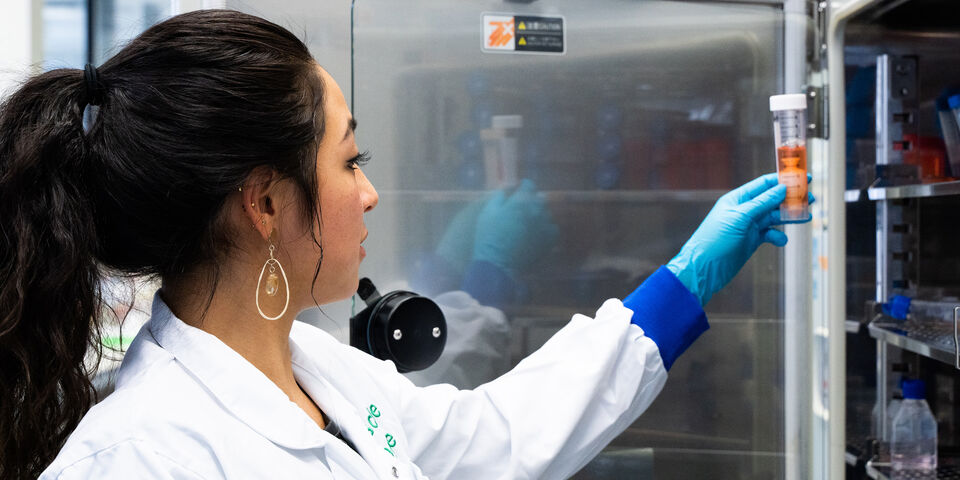'Semi-human vase' connects art and science
A special collaboration between designer Hongjie Yang and scientists Patricia Dankers and Dan Jing Wu from TU/e has led to a series of unique, imaginative objet d’art: the ‘semi-human vase’; a 3D-printed mold in the shape of three different vases cultured with patches of human cells stained in blue. This project will be exhibited in the world-famous museum Centre Georges Pompidou in Paris. The project provokes the notion among visitors that the border between human and object is fading.
The project with the official title ’Semi-human Delft blue’ is a set of three vases with blue stained HeLa cells, giving the vase a ‘Delft blue’ appearance. For more than sixty years, it has been possible for human cells to live and grow outside of the body. It is not straightforward, as cells behave completely differently in this alien environment. However, after decades of research, it is becoming increasingly feasible for cells to grow on complex, three-dimensional structures, such as those vases produced using 3D printing techniques.
Read on below the video.
This project is the latest version of a series of Yang’s research into the design potentials of human tissue engineering and a tribute to Dutch Culture. Yang is intrigued by this notion that we are able to derive objects from the self. The new ‘Delft blue’ forms intend to question the new notion of crafts and luxury in the post natural era. “By mediating cultural nostalgia with technological possibility, a new notion of luxury is explored,” Yang says. In order to make the arrival of such ‘semi-human’ objects known, he formulated the idea of a vase that is partly made up of cultured human cells.
Thought-provoking
To realize the project, Yang approached TU/e professor Patricia Dankers and PhD candidate Dan Jing Wu, who develop and investigate new biomaterials to control and promote tissue repair, a branch of science known as regenerative medicine. "The project offers us a unique opportunity to share the research we do with the general public in a different way. It shows the progress in this research field and gives a stimulating picture of the future," says Dankers. "By developing intelligent, responsive biomaterials, we hope to be able to make entire organs in the future, such as a beating heart," says Wu.
Read on below the photo.
The project is part of a special exhibition on the many new forms of artificial life (‘La Fabrique du Vivant - The Factory of Life’) in Centre Georges Pompidou. This exhibition examines the changes in the concept of nature linked to technological production.
In the end it was not possible to show the real vases with HeLa cells in the museum, so replicas are shown. “Hopefully the idea is stimulating enough to the public to raise the ethical aspect of regenerative medicine and the use of human cells,” says Dankers.
The project ‘Semi-Human Tissue Engineered Vase’ can be seen in Paris until 15 April 2019.





Discussion